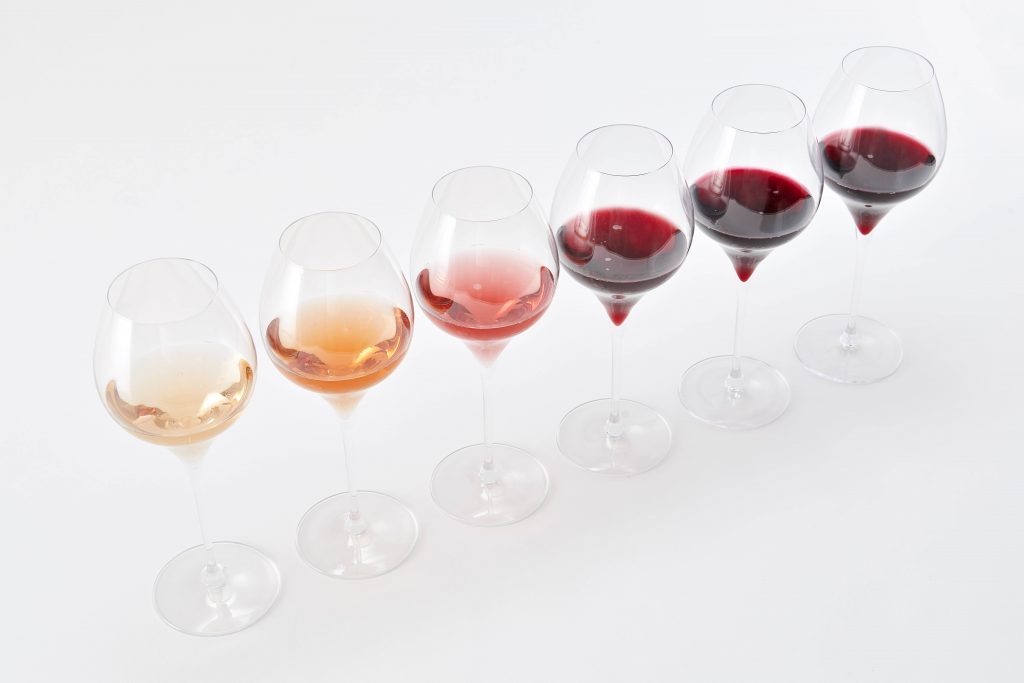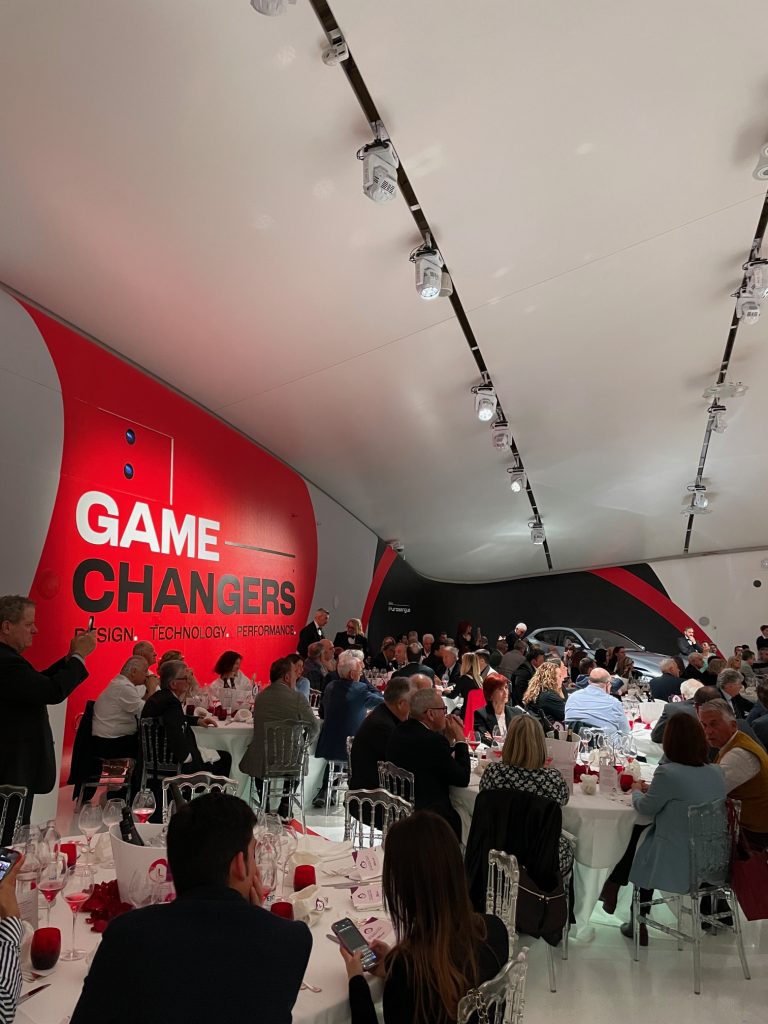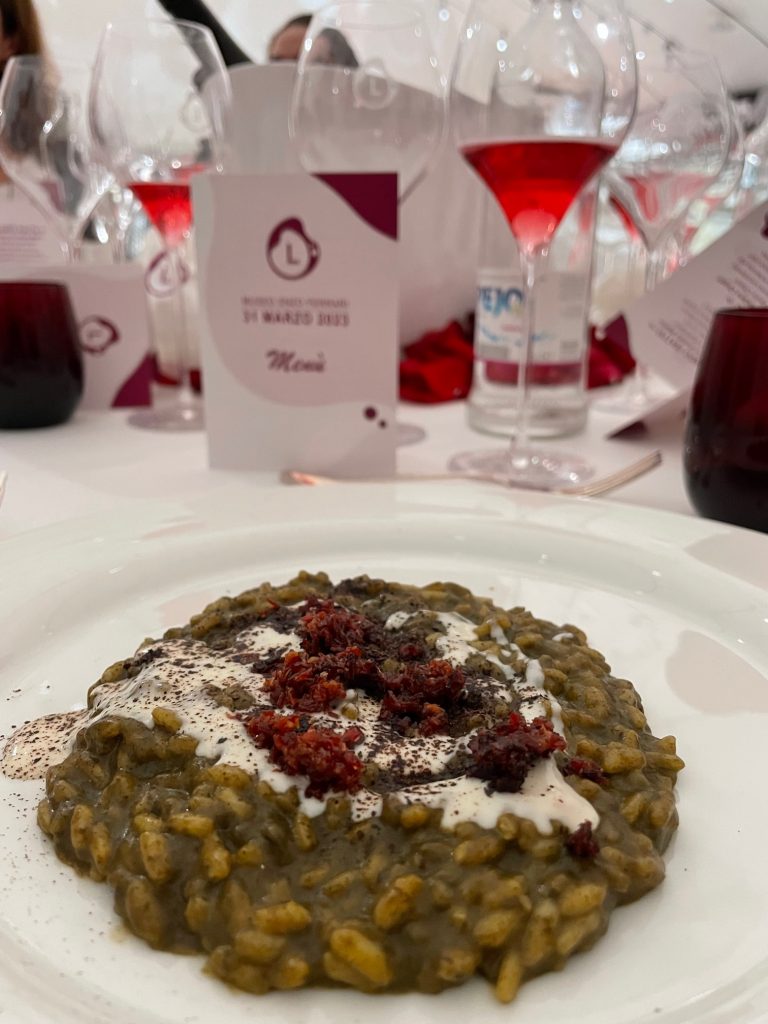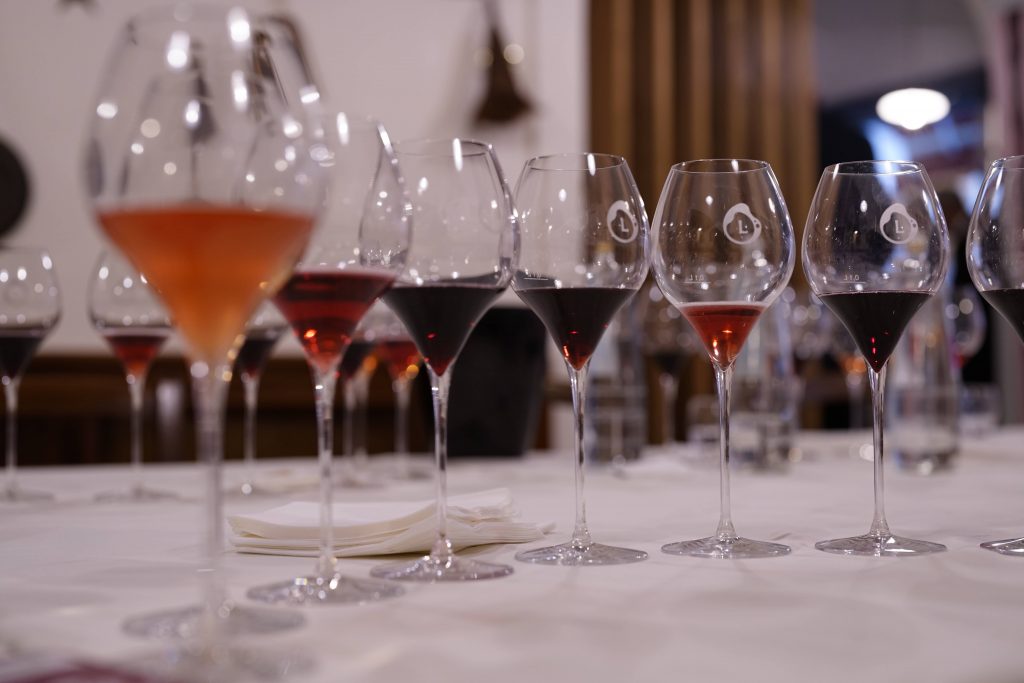On March 31, the Lambrusco Consortium celebrated 50 years of Lambrusco’s oldest DOC appellations with a no-expense-spared party held in the iconic setting of the Enzo Ferrari Museum in Modena. Catered by locally renowned chefs Emilio Barbieri (Ristorante Anna), Stefano Corghi (Ristorante Il Luppolo e L’Uva and Osteria Santa Chiara) and Andrea Medici (Ristorante Osteria in Scandiano), 150 lucky people, including producers, dignitaries and the press, celebrated the anniversary after a two-year delay due to the pandemic.

Eric Asimov sang the praises of Lambrusco in 2017 during one of the New York Times’ ‘Wine School’ lessons and the world woke up again to the potential delight of Emilia’s famous red bubbles. Part and parcel of local traditions, Lambrusco is a 50-shades wine, from Cosmopolitan cocktail-hued Lambrusco di Sorbara DOC to ruby red Lambrusco Grasparossa di Castelvetro DOC, purplish Lambrusco Salamino di Santa Croce DOC and Reggiano DOC.
Back in Roman times, Cato the Elder spoke about the high productivity of Lambrusco, stating that two-thirds of an acre could produce enough wine to fill 300 amphoras. Today, about 50 million bottles of Lambrusco DOC are produced every year, and the quality continues to soar. Lambrusco di Sorbara (north of Modena), Lambrusco Grasparossa di Castelvetro (south of Modena), Colli di Scandiano e di Canossa, Lambrusco Salamino di Santa Croce (northwest of Modena), Modena and Reggiano make up the six Lambrusco denominazione di origine controllato appellations, while 12 native red grape varieties—Pellegrino, Benetti, Viadanese, Oliva, Montericco, Marani, Maestri, Barghi, Foglia Frastagliata, Salamino, Grasparossa and Sorbara—are used solo or combined depending on the rules for each DOC.


Hailing from the provinces of Modena and Reggio Emilia, the Lambrusco family has more in common than outward appearances might suggest. Bubbles are a must, although the perlage varies between a lively ceaseless effervescence to a wide frothy surface. Low alcohol is another similarity—hardly anyone left the Ferrari Museum three sheets to the Modena wind—even if the impression is that dry, tannic Grasparossa and Reggiano pack a vinous punch compared to their lighter counterparts. There’s no doubt in anyone’s mind that these are food wines. At last year’s Vinitaly, the Lambrusco Colours tasting led by Filippo Bartolotta was paired with local parmesan and prosciutto, which made the session all the more delicious. The same applied to the celebratory dinner just held in Modena: Stefano Corghi’s risotto with a 24-month Parmigiano Reggiano DOP and a dusting of Prosciutto di Modena DOP was a match made in heaven for the dry fullness of Cantina di Carpi e Sorbara’s Lambrusco Salamino di Santa Croce ‘Dedicato ad Alfredo Molinari’.
Prior to the gala dinner, journalists and sommeliers had the opportunity to taste 40 Lambruscos, almost all 2022 vintages. In the past, we might have feared the potential for tooth-jangling residual sugar. Instead, the tasting was enjoyable and insightful, an overview of what Lambrusco has become through the investments and innovations that the region’s producers continue to make. In recent years, efforts have been made to make Lambrusco differently with Charmat and Champagne methods, in addition to the traditional slightly sparkling frizzante style, which remains the most popular among winemakers. As we sniffed, sipped and spat (tasting is not a glamorous sport), Mario Soldati’s words emblazoned in red on the walls of the tasting room were confirmed. “Light wines have no absolute laws. They are living beings, unpredictable, varied and quirky.”

“Lambrusco is an eclectic wine, whose differences offer added value,” commented Claudio Biondi, president of Consorzio Tutela Lambrusco, whose 70 member wineries joined forces in January 2021 in a merger between the previous three consortia: Consorzio Tutela del Lambrusco di Modena, Consorzio Tutela e Promozione dei Vini Reggiani DOP and Consorzio Tutela Vini Reno. “Our production covers 10,000 hectares…The message we want to give is aimed at the next 30 years and what consumers will want in the future.” Biondi then announced the Consortium’s next big occasion: June 21 has been designated as Lambrusco Day and the date will be celebrated with a dinner at the Eiffel Tower, attended by Italy’s first and only Master of Wine, Gabriele Gorelli.







